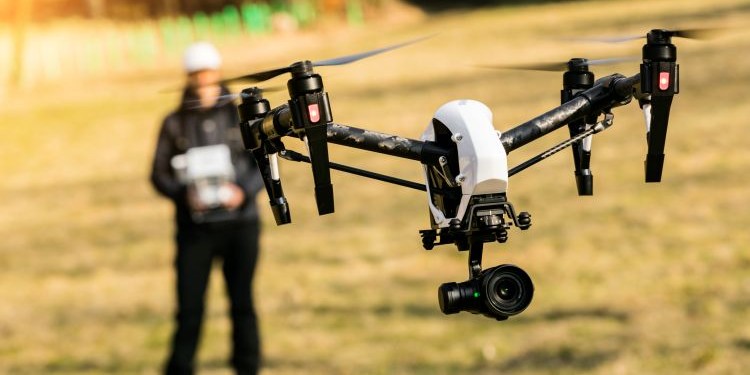How Far Can a Drone Fly? (And Why That Should Terrify You)

Most folks look at a drone and think, “Cool toy,” or maybe “That’d be fun to get aerial shots of my backyard chickens.” What they don’t think is, “How far can that thing go?” or “Who else is using this tech to watch, track, or control?” That’s the real question — because once you know the range, you start seeing the bigger picture. And it’s not some scenic landscape from 400 feet up. It’s a web of surveillance, warfare, and government overreach.
Let’s break it down.
How Far Can Civilian Drones Fly?
For your average person buying a drone off the shelf — say from Best Buy or Amazon — flight range depends on the model and money you’re willing to throw at it. Here’s a rough breakdown:
- Toy drones (under $100) – 100 to 300 feet. Basically glorified RC helicopters.
- Consumer drones (DJI Mini, etc.) – 1 to 7 miles. Yep, miles.
- Prosumer drones – Up to 10 miles or more with boosted antennas and line-of-sight.
- Custom-modified drones – Some hobbyists push 20+ miles with signal boosters and GPS flight programming.
Now imagine someone tweaking their drone to auto-return, fly at dawn, and loiter above your homestead while you’re sleeping. We’re not talking about a tech geek with too much time — we’re talking about the kind of low-budget surveillance anyone with $500 and a YouTube tutorial can deploy. You think that’s far-fetched? There are forums dedicated to turning drones into mobile signal sniffers and terrain mappers.
And with AI-assisted autopilot and waypoint programming, even non-techies can set a drone to fly several miles away, loiter for surveillance, and return without ever being seen. So if civilians can do that, ask yourself — what are institutions with unlimited budgets doing?
So… How Far Can a Military Drone Fly?
Let’s shift from backyard toys to battlefield monsters. Military drones are a whole different beast:
- RQ-4 Global Hawk – Over 12,000 miles range. Yes, twelve thousand. It can fly from the U.S. to the Middle East without landing.
- MQ-9 Reaper – Around 1,150 miles with a 27-hour flight time — while packing missiles.
- Nano drones like the Black Hornet – Used for reconnaissance. Range is shorter (under 2 miles), but you’ll never see it coming. Literally.
These drones don’t just fly far — they fly high, undetected, and with a payload that can deliver death from above or data back to a central AI system in real-time. They’re satellites with wings, and they don’t knock before entering your airspace. If your name ends up on a list — real or mistaken — the drone doesn’t care. It follows orders, not morals.
And don’t assume these are only used “over there.” Border patrol drones, leased military units, and FEMA-linked assets have already operated within the U.S. during emergencies. There’s no oversight. No civilian opt-out. Just one more shadow circling overhead, ready to observe — or strike.
Military Drones vs. Civilian Drones: Two Worlds, Same Sky
| Feature | Civilian Drone | Military Drone |
| Max Range | Up to ~10 miles (modified) | 1,000–12,000+ miles |
| Flight Time | 15–45 minutes | 24+ hours |
| Payload | Camera, maybe small package | Cameras, missiles, thermal, SIGINT |
| Altitude | ~400 feet (legal limit) | 50,000+ feet |
| Regulation | FAA-restricted | Exempt if .gov or .mil |
| Use in Emergencies | Search & rescue, surveillance | Targeted strikes, riot suppression, recon |
Here’s the part most people miss: the two worlds aren’t staying separate. Military-grade drones are trickling into civilian police departments under “federal assistance” programs. Think that’s just for search and rescue? That’s the excuse. The reality is cities across America have already tested thermal imaging, facial recognition, and mass surveillance using drone fleets. Quietly. Without votes. Without consent.
And the kicker? Once the line between military and civilian blurs — and it’s already doing just that — every domestic drone becomes a tool of compliance. Or force. Or both.
Why You Should Be Concerned When SHTF
Drones are already being used in disaster response. That’s the public story — search and rescue, mapping fires, helping with floods. Sounds good on paper. But remember, surveillance is a double-edged sword.
When SHTF — whether it’s a grid failure, civil unrest, or “natural disaster” response — drones become eyes in the sky for those in power. Want to bug out unnoticed? Harder when thermal drones are mapping every heat signature in your county. Want to defend your homestead? Better hope they don’t consider that “hostile resistance.”
During Hurricane Katrina, the public saw a glimpse of how quickly federal and military operations can shift from rescue to lockdown. Drones now make that easier. No boots needed — just buzz over every block and log every movement. Toss in AI, and suddenly, your backyard fire pit becomes “unauthorized burning,” or your solar rig gets flagged for “off-grid behavior.”
And FEMA? They’re not twiddling their thumbs. They’ve run urban drone exercises for crowd monitoring, communication blackouts, and “containment protocols.” That’s their language — not mine. Think about it: the same agencies that struggle to keep up with road maintenance can launch aerial eyes in every major city within hours.
Legality of Drone Use in the U.S. (And How That Doesn’t Matter)
Legally, civilians in the U.S. must follow FAA regulations:
- Line-of-sight flying only
- 400-foot altitude limit
- Restricted zones near airports
- Registration required for drones over 0.55 lbs
- No flying over people or private property without consent
Sounds neat and tidy, right?
But here’s the truth: when you break those rules, it’s a fine. When they break them? It’s “classified.”
The reality is that government agencies — federal, state, even city-level — can apply for waivers that exempt them from almost every restriction above. You, meanwhile, get a visit from the FAA if you fly over a parade with your DJI. They? They can monitor protests from above, map “at-risk” zones, and store footage indefinitely.
And yes, police departments across the U.S. have already admitted to using drones to monitor citizens without warrants. Some even work with federal agencies to piggyback off DHS or FEMA drone data. So while your drone flight gets flagged on YouTube, theirs gets archived in a fusion center database.
Final Thoughts
“How far can a drone fly?” isn’t just a tech question. It’s a red flag.
Sure, drones can be cool tools for mapping, filming, even rescue. But when power shifts, they become the perfect instrument of control. Military-grade eyes in the sky. Silent. Constant. Watching from 50,000 feet.
These aren’t tomorrow’s threats — they’re already flying. While you’re focused on prepping food and fortifying your home, the sky is slowly being claimed by machines programmed to monitor, assess, and potentially act.
Start looking up.
Because someone already is.
You may also like:

US Fallout Shelter Map
This Book Can Help You Live in a World Without Electricity (Video)
How to Keep Your Generator Running in Silence
The Knife In Rambo – Good For Survival Or Not?
Top Tips for Securing Homes: Ensure Safety and Peace of Mind
Read the full article here









